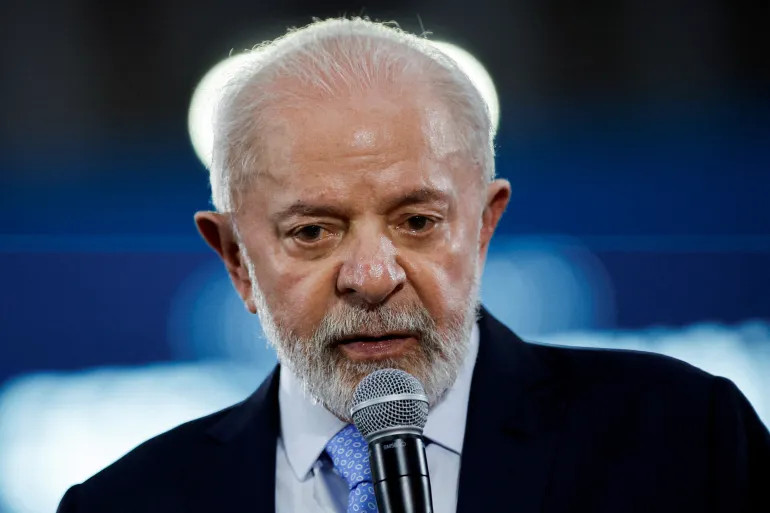President-Elect Donald Trump has stated numerous times that, once he takes office, he plans to shut down the U.S. Department of Education.
The department provides roughly 10% of K-12 funding and enforces federal civil rights in schools. However, it plays a much larger role in financing higher education. Managing approximately $1.5 trillion in student loan debt for over 40 million borrowers, the Education Department represents one of the largest holders of consumer debt in the country.
“I’m going to close the Department of Education and move education back to the states,” Trump pledged at a campaign rally in September. Already, about 90% of school funding comes from state-level education departments and local agencies, and the federal Education Department does not set school curriculum.
Still, Trump has made closing the Education Department a part of his “Agenda 47” plan, stating that “we’re going to do it fast” in the first weeks of assuming office for his second term.
On social media, conspiracy theories are flourishing about what would happen if the department were to shut down.
On X, the social media site formerly known as Twitter, viral posts claim that Trump could be inadvertently canceling all student loan debt by closing the department. Or that Project 2025, a policy wishlist from the conservative think tank Heritage Foundation, would force students who already received student loan forgiveness to repay the loans anyway.
Neither claim is true, but it’s clear that some borrowers are worried about what could happen to the Education Department and their student loans under the incoming Trump administration.
Could Trump shut down the Education Department?
Experts warn that disbanding the department would have unforeseen rippling effects not just on K-12 and higher education but the economy in general — if it were to happen. And that appears to be a pretty big if.
“Eliminating the U.S. Department of Education is extremely unlikely,” says Michael Itzkowitz, president of the HEA Group, an education policy consultancy.
Itzkowitz, a former Obama-appointed Education Department official, tells Money that Trump can’t dissolve the department on his own. Congress would have to pass a law to do so — and that would need support from Democratic Senators to reach the 60-vote threshold to overcome the filibuster. (In the U.S. House of Representatives, it’s still not clear whether Republicans have gained control with several races still a toss up, though it looks increasingly likely.)
That said, it has technically been done before. The current iteration of the Education Department was created by former President Jimmy Carter, opening in 1980. But that wasn’t the first Education Department.
More than a century prior, President Andrew Johnson’s administration created an Education Department during the Reconstruction Era in 1867. By 1869, the agency was all but shuttered. Congress shrunk its funding and the department merged with the Department of Interior, becoming the Bureau of Education.
The argument then was much the same as it is today: Opponents of the department say it is wasteful and ineffective, and that states should solely manage their own education programs.
Project 2025 makes that argument almost verbatim.
“Federal education policy should be limited and, ultimately, the federal Department of Education should be eliminated,” wrote Lindsey Burke in Project 2025’s education policy section.
Burke, who is the director of education policy at the Heritage Foundation, goes on to say that states and local governments should have direct control over all federal education funding. And that families should have education savings accounts that they could contribute to and apply toward a host of education options.
Where would $1.5 trillion of federal student debt go?
In the unlikely event that legislation to close the Education Department was successful, a major question that would need to be addressed is: What would happen to all that student loan debt?
Trump has not addressed this question directly, but loans would almost certainly not be forgiven, as Trump has repeatedly criticized the Biden administration’s attempts at student loan forgiveness.
Project 2025 offers one possible path forward.
The conservative playbook recommends that the Education Department’s current Office of Federal Student Aid be transformed into an entity with a board of trustees appointed by the president. This group would oversee the federal student loan portfolio on behalf of the U.S. Department of the Treasury.
The Treasury Department, under this proposal, would oversee payment collections, defaults and borrower relations of federal student loans, much like the IRS does with federal income taxes.
It’s not clear whether Trump would follow this strategy. On the campaign trail, he sought to distance himself from Project 2025, as did Vice President-Elect JD Vance. Both Trump and Vance, however, have several ties to project’s authors and the Heritage Foundation.
For instance, Vance wrote the foreword for a new book by the Heritage Foundation’s president, calling the think tank “the most influential engine of ideas for Republicans from Ronald Reagan to Donald Trump.” And a Project 2025 author, Russ Vought, was the federal government’s budget director during Trump’s first term.
What to expect from a Trump Education Department
Although President-Elect Trump will not have unilateral control to disband the Education Department, he will have significant power to influence how it operates.
He has the power to appoint a new Secretary of Education, for one, replacing President Joe Biden appointee Miguel Cardona. Trump’s pick will need to be approved by the Senate.
Under Trump, the day-to-day priorities of the department are expected to take a 180.
“We’re likely to see a repeat of Trump’s first term,” says Itzkowitz. “Generally, this involved scaling back any and all regulations put in place by the Obama or Biden administrations.”
Biden put significant emphasis on student loan forgiveness through Public Service Loan Forgiveness (PSLF) and income-driven repayment (IDR) options. For instance, Biden created an all-new repayment plan called the SAVE plan, which sought to forgive remaining student debt after borrowers made at least 10 years of qualifying payments. In the meantime, it set millions of borrowers’ monthly payments to $0.
SAVE is currently on hold as it’s being challenged in federal court. Assuming it survives the legal challenge, Itzkowitz says the Trump administration could simply divert resources from it as well as PSLF once in power, without any Congressional action required. In Trump’s first term, for example, his budget requests called for slashing funding for multiple federal student aid programs, including PSLF.
In that case, a lot of current initiatives at the Education Department could face death by neglect.
“It’s likely that the incoming administration will abandon forgiveness programs,” he says, “whenever and wherever possible.”










